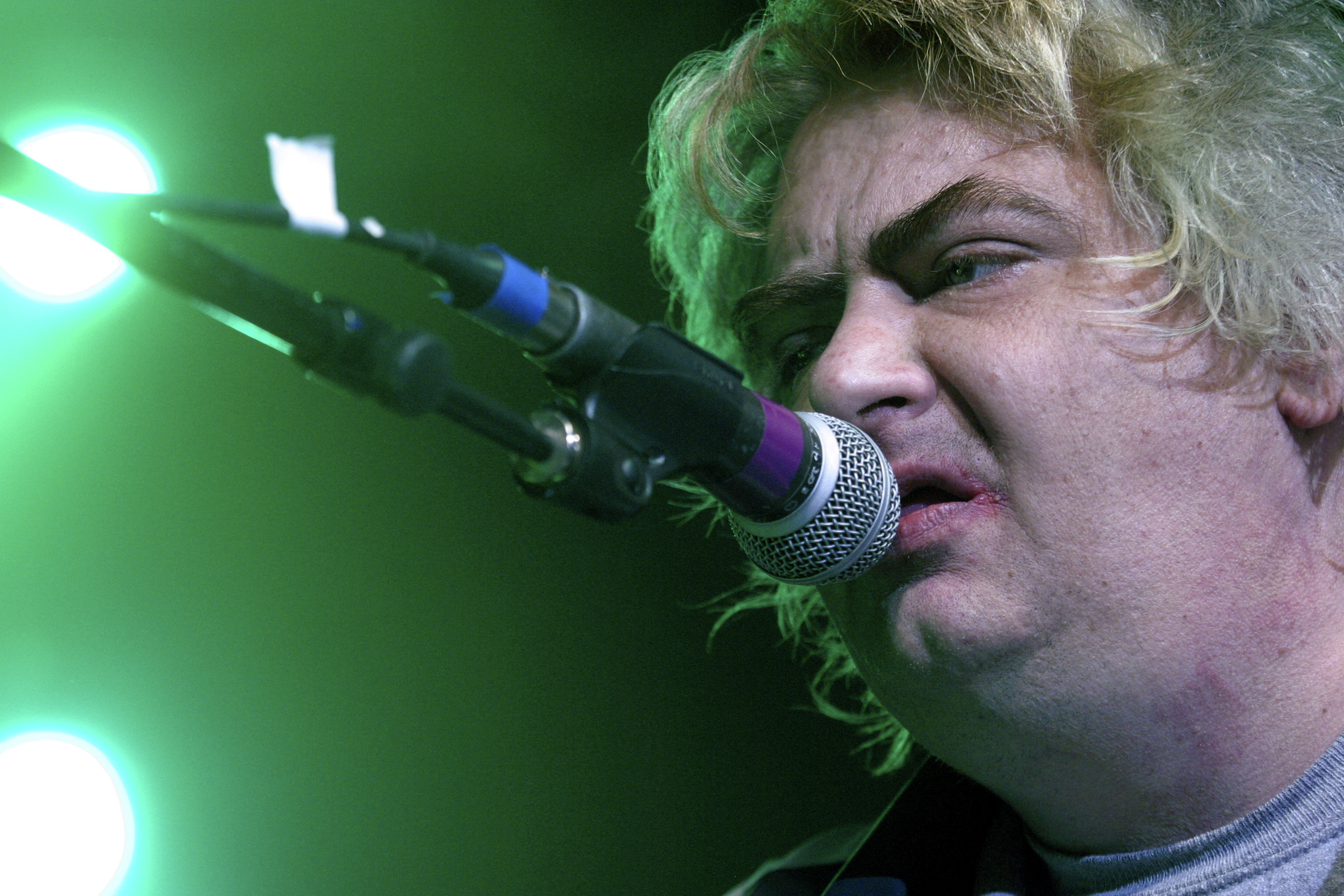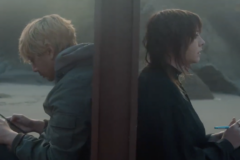This story originally appeared in SPIN’s April 2006 issue. We’ve digitized and republished it in the wake of Johnston’s death.
Filmmaker Jeff Feuerzeig likes to say that he and Daniel Johnston first met on the radio. The year was 1990, and the enigmatic singer/songwriter was in the midst of a live broadcast on Jersey City’s WFMU, during which he improvised new music, performed comedy skits in multiple voices, recorded his classic version of “Speeding Motorcycle” with Yo La Tengo, and took calls from listeners—including Feuerzeig, who dialed in to ask if Johnston’s song “Funeral Home” was a rip-off of Bruce Springsteen’s “Cadillac Ranch.” (It was.) Johnston did this all in a single hour, and he did it on the phone following his release from a West Virginia mental hospital. “He laid it all out there,” says Feuerzeig. “It’s absolutely scarier than Orson Welles’ War of the Worlds.”
The documentarian would not actually encounter the object of his obsession in person until a decade later, at live shows at New York’s Knitting Factory and Austin, Texas’ SXSW festival in 2000. But the 39-year-old Daniel Johnston that Feuerzeig finally shook hands with was no longer the slight young man with the shaky singing voice who had made himself an icon of the ’80s under-ground music scene with homemade, hand-circulated recordings of his songs about unrequited love and mental illness. “He was very overweight, he was weathered, he was gray,” Feuerzeig says. “He looked like he’d seen the wisdom of the ages. But that voice was still there.”
When Feuerzeig (Half Japanese: The Band That Would Be King) at last told Johnston that he wanted to make a movie about the musician’s life, “he was like, ‘Oh, cool, cool, that sounds great,'” says the director. “Then he went back to smoking his cigarette.”
It would take another four and a half years for Feuerzeig to complete The Devil and Daniel Johnston (in theaters this month), an alternately haunting and heartbreaking exploration of how Johnston metamorphosed from the endearing but unmistakably troubled performer of Hi, How Are You and Yip/Jump Music to a severe manic depressive who now happily lives in a world of his own. “It’s arrested development,” says Feuerzeig. “I’ve been in his garage at three in the morning with him, and you feel like, ‘Wow, it’s really great to be back in high school.'”
In gathering his raw material for Devil, Feuerzeig received an unprecedente and overwhelming level of assistance from his subject: At the home where the Johnston family now resides in Waller, Texas, he discovered a huge archive of materials revealing that Johnston had already been documenting his own life, from compulsively sketched drawings to elaborately edited Super 8 movies to garbage bags full of cassettes on which the artist had recorded 20 years worth of conversations and phone calls. “When he was out in public, taping people or taping his parents, or taping God knows what, he usually did it in a concealed way,” says Jeff Tartakov, Johnston’s longtime friend and former manager. “He had this master plan that he was going to do something with all of this.”
But in dramatized re-creations and footage supplied by other friends and associates of Johnston’s, the film also reveals an artist whose paranoid delusions of satanic possession could make him unpredictable and dangerous. During one psychotic episode in 1998, Johnston compelled a woman to jump at the Statue of Liberty, got arrested, and had to be rescued on the streets of New Jersey by Sonic Youth. “In spite of the seriousness of it, Thurston and I were in the car getting a great charge out of it,” says Lee Ranaldo, whose videotaped record of the frantic search appears in Devil. “It seemed like a real adventure.”
At age 45, Johnston now enjoys a semblance of a normal life, via a massive regimen of medications, and has since recovered from a severe case of lithium poisoning he suffered in 2005. But the Johnston we see at the end of Devil is ultimately a tragic figure who may or may not be aware that he’s at last achieved the fame he’s always dreamed of. “It was always hard to tell whether (Johnston’s music) was the work of a calculating genius or a boy-child,” says Ranaldo. “But those are the kinds of people, dreaming those dreams, who become your Buddy Hollys, your Kurt Cobains. You have to have that feeling about yourself to begin with, and Daniel definitely had it.”
Yet Johnston also emerges from the film as a final remaining link to an underground culture that may have been invisible to the naked eye, but was very much alive in the ink of fanzines and the magnetic encoding of bootleg cassettes. “I think the cassette market would be completely dead if it weren’t for the movie,’ says Tartakov, who still sells tapes of Johnston’s earliest music through the mail. “The movie’s gonna save me. I’m hoping people buy cassettes as artifacts, even if they don’t have cassette players. I’d better stock up on my tape dubbers now, because they’re getting harder to find.”





